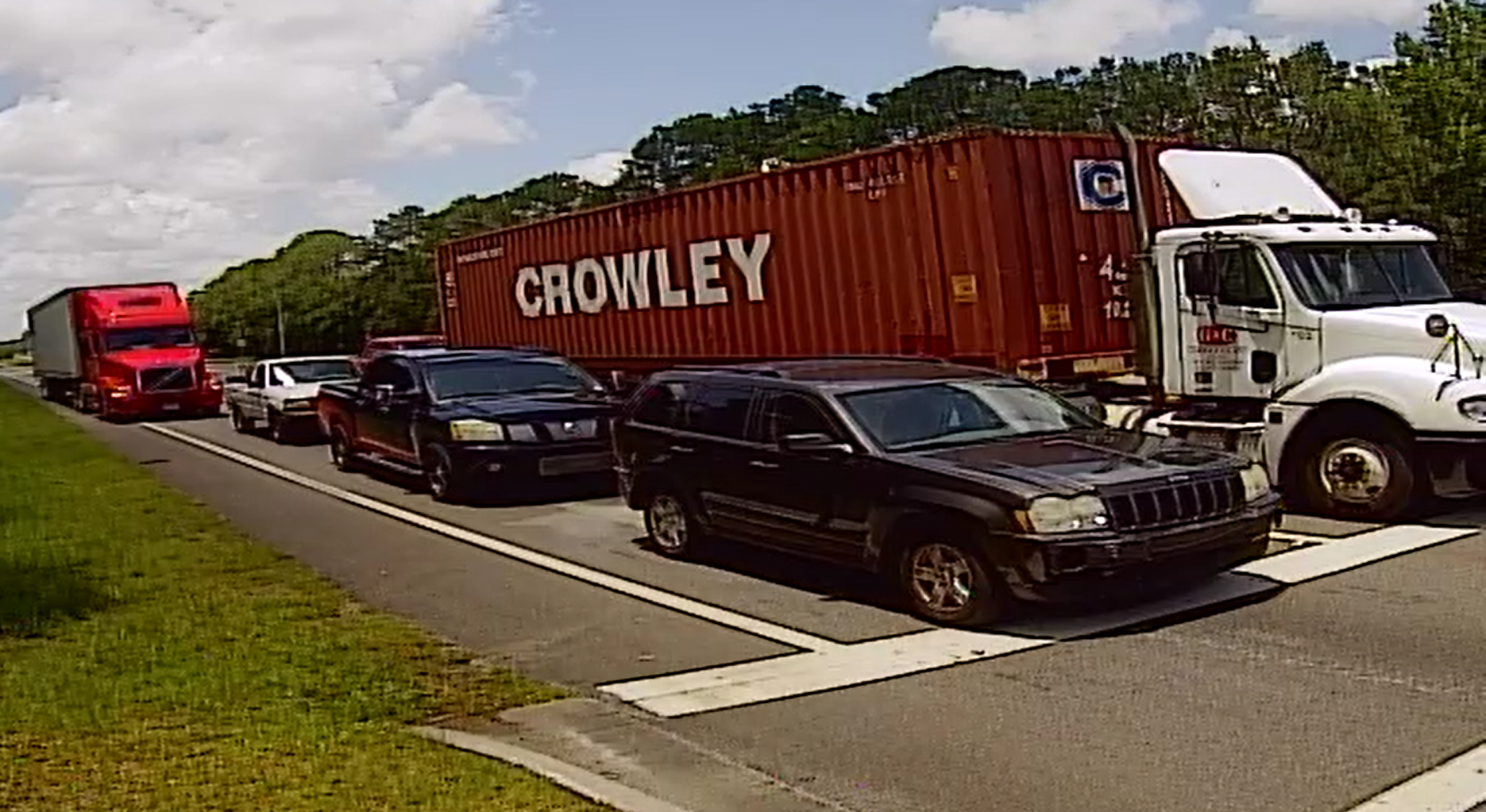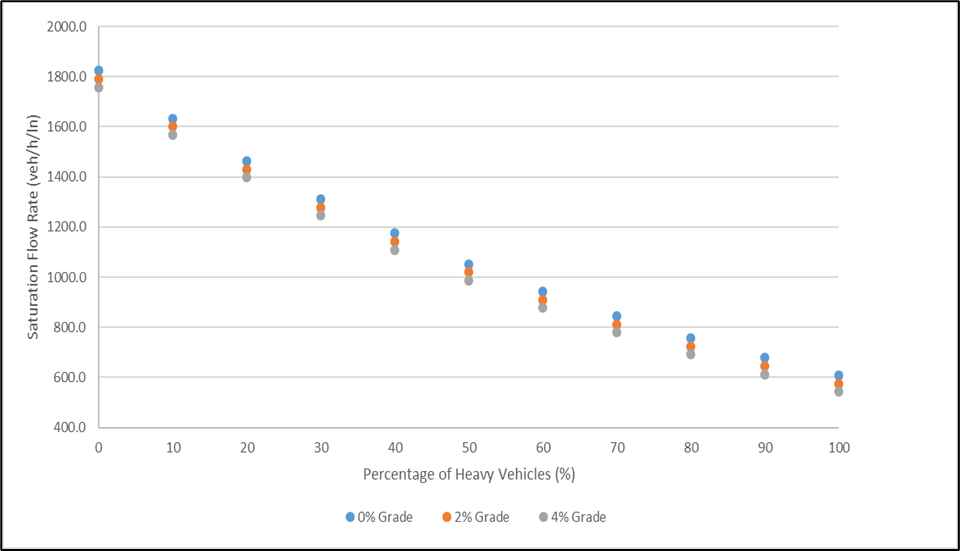4.3 Traffic Operations Considerations
The combination of large size and poor acceleration performance for tractor-trailers can result in significant traffic operations impacts. The saturation flow rate at signalized intersections is one example. Figures 4.5, 4.6, and 4.7 illustrate the relative impact on the queue length (in distance) by tractor-trailers.

Figure 4.5: Example of Queuing at a Signalized Intersection with Tractor-Trailers (1)
Source: Washburn and Cruz-Casas (2010)

Figure 4.6: Example of Queuing at a Signalized Intersection with Tractor-Trailers (2)
Photo Source: Scott S. Washburn

Figure 4.7: Example of Queuing at a Signalized Intersection with Tractor-Trailers (3)
Photo Source: Scott S. Washburn
The added queue distance combined with the relatively poor acceleration of tractor-trailers results in reduced saturation flow rates, and consequently capacity, at signalized intersections. Figure 4.8 illustrates how an increasing percentage of tractor-trailers in the traffic stream reduces the saturation flow rate at a signalized intersection. A saturation flow rate of approximately 1800 veh/h/ln corresponds to a traffic stream of only passenger vehicles.

Figure 4.8: Signalized Intersection Saturation Flow Rate vs Percentage of Tractor-Trailers
Source: Ozkul and Washburn (2019)
On uninterrupted flow roadways, such as freeways, these same issues–relatively larger size and poorer acceleration compared with passenger vehicles–are accounted for on traffic stream performance through a passenger car equivalent (PCE) factor. The PCE value is used to calculate a heavy vehicle factor, which in turn is used to convert a traffic stream from units of veh/h to units of passenger cars per hour (pc/h). The latter value will always be higher if the percentage of tractor-trailers in the traffic stream is not zero.